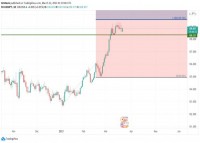|
By Mark Melin When faced with initial due diligence, investors often swim through a sea of past performance numbers. How might one best go about this early stage due diligence task? Walk through the analysis of Quantica Capital’s Managed Futures Program to see how one might consider different variables in a managed futures selection process. Categorize Based on Strategy, Markets Traded and Trade Time Frame: To effectively organize the due diligence task, it is best to determine strategy as defined based on what drives trade decisions. It is important to differentiate between strategy and markets traded or trade time frame, as you will see. We will consider the case of Quantica managed futures fund a Schaffhausen, Switzerland based trend following program, their beta performance driver is price persistence. When correlating a portfolio, and modeling it through various market environments, it is helpful consider the mix of beta performance drivers in the portfolio as well as markets traded and trade time frame, key factors in trend following. Markets Traded Considerations: Some managed futures funds may narrowly focus their markets traded on various niches while others may be exceedingly broad. As an investor understand the logic behind the market traded choice and benchmark this logic on a going forward basis. For instance, Monsoon Capital is a CTA who trades only Asian equity markets due to the fund manager’s belief that they are driven more by the emotion of retail investors than US or European equity markets. Thus trends are more prevalent and pronounced, is the manager’s logic. With this understanding, set expectations but also understand correlation considerations. When considering markets traded in an investment, also recognize the depth and related liquidity of the market relative to the size of the trading program. Certain trading programs in highly niche markets – Asian rubber markets, for instance – are generally only available to smaller funds. Larger funds may be limited only to trade larger markets, which impacts performance expectations. In a due diligence report, one might want to consider volatility relative to markets traded. Trade Time Frame: In managed futures it is always interesting to consider trade time frame as it relates to downside risk management. For instance, with an understanding of trade time frame the investor might ask questions relative to risk management in certain long duration program. Some long term managers may ignore short term drawdown if the longer term trade signal remains positive. Thus, in such a program the investor might be expected to tolerate drawdowns in order to remain in the longer term trend. In a due diligence report, outline the trade time frame and implications relative to risk management and drawdown tolerance. Evaluation By the Numbers Different strategies have different average performance numbers that might be used as a guidepost (but not definitive) measurement. (The following is based on studies conducted in 2008 and then again in 20101. ) Use Loss Size, not Win Percentage: In a trend following program, win percentage can be among the lowest of all primary strategy types at 57%. Compare this with the options (volatility) category that has the highest win percentage at 74.25%. With an understanding of the premise of each strategy this is logical. However, in trend following the measurement one might want to better consider is control of loss size. In trend following average loss size was 3.63% compared to the options category with 5.38%. This can be explained because fundamental to many trend strategies is to let upside deviation run while managing downside deviation. Conversely, many of the option strategies are focused on small but consistent wins and can experience difficulty during periods of rapidly rising volatility. In the case of Quantica, their average monthly loss size was 2.08% and their downside deviation was 2.01%, two key performance numbers the investor may wish to benchmark. Margin to Equity: After the investment has been categorized at a high level, then start to consider different performance variables. One interesting consideration is their margin to equity ratio, which can differ based on strategy. Studies of average margin to equity levels can vary, but a benchmark study conducted in 2010 averaged systematic trend following at 15.56%. In Quantica’s case, margin to equity was reported at 12%. This is an interesting number to keep an eye on going forward, particularly if a trading program experiences volatility as the risk manager may wish to watch margin to equity for signs of strategy shift. With a margin to equity ratio of 12, Quantica has an attractive leveraged returns ratio but a more impressive leveraged volatility ratio. These are a few considerations to help narrow choices in the managed futures investment selection process. 1. Risk Disclosure / Footnote: Averaged CTA performance is not being represented as reflective of individual performance. Past performance is not indicative of future results. Source: HPMF Strategy Benchmark Performance Study was referenced in this article, 2010 (Wiley). The study on Page 239 was conducted by averaging the performance of all managed futures programs with a 36 month track record or longer reporting to the BarclayHedge CTA database at the time of the reporting period. Spot checking of the study has occurred since 2010 but no inclusive study of the topic has taken place since that point. Additional performance sources: |
|
This article was published in Opalesque Futures Intelligence.
|





 RSS
RSS









